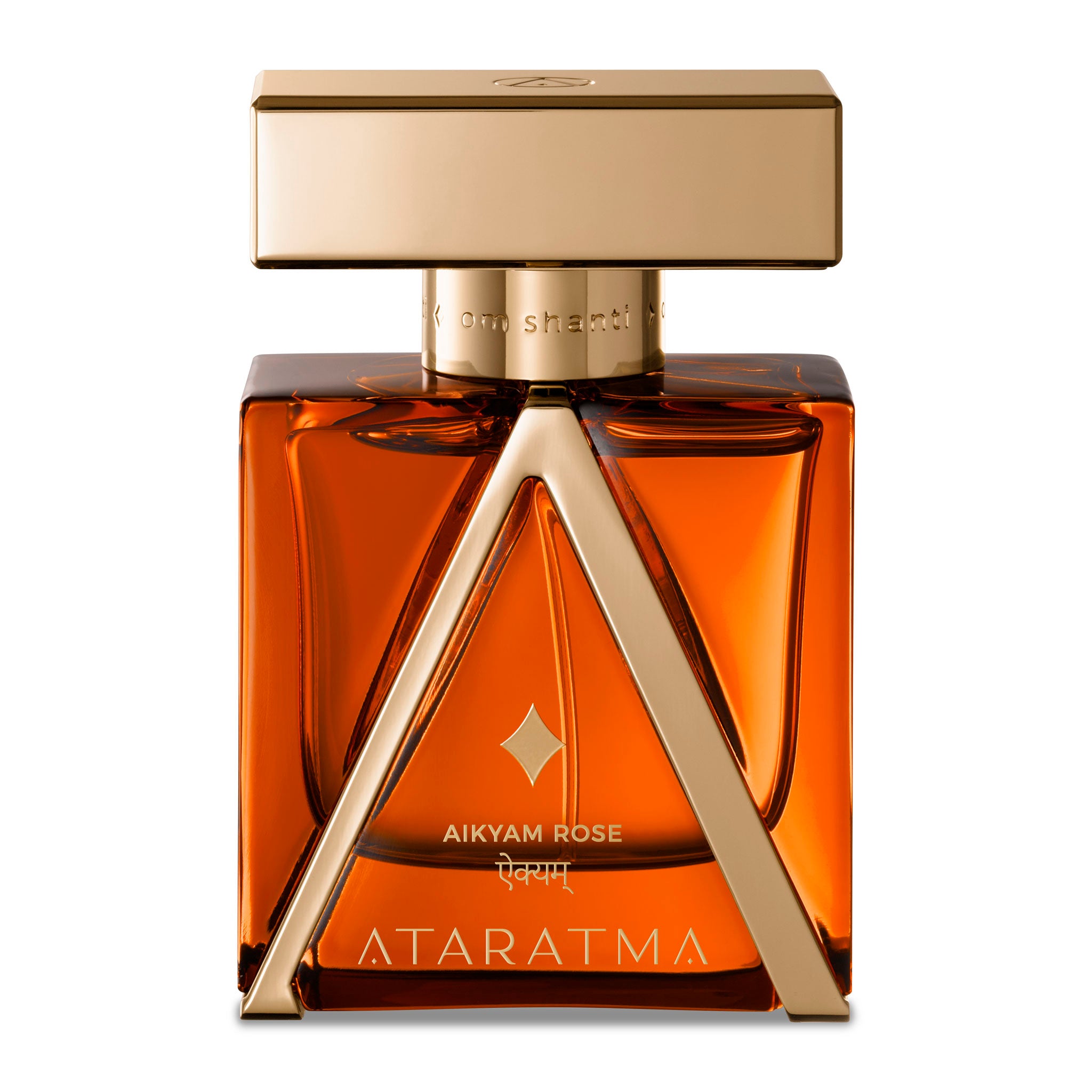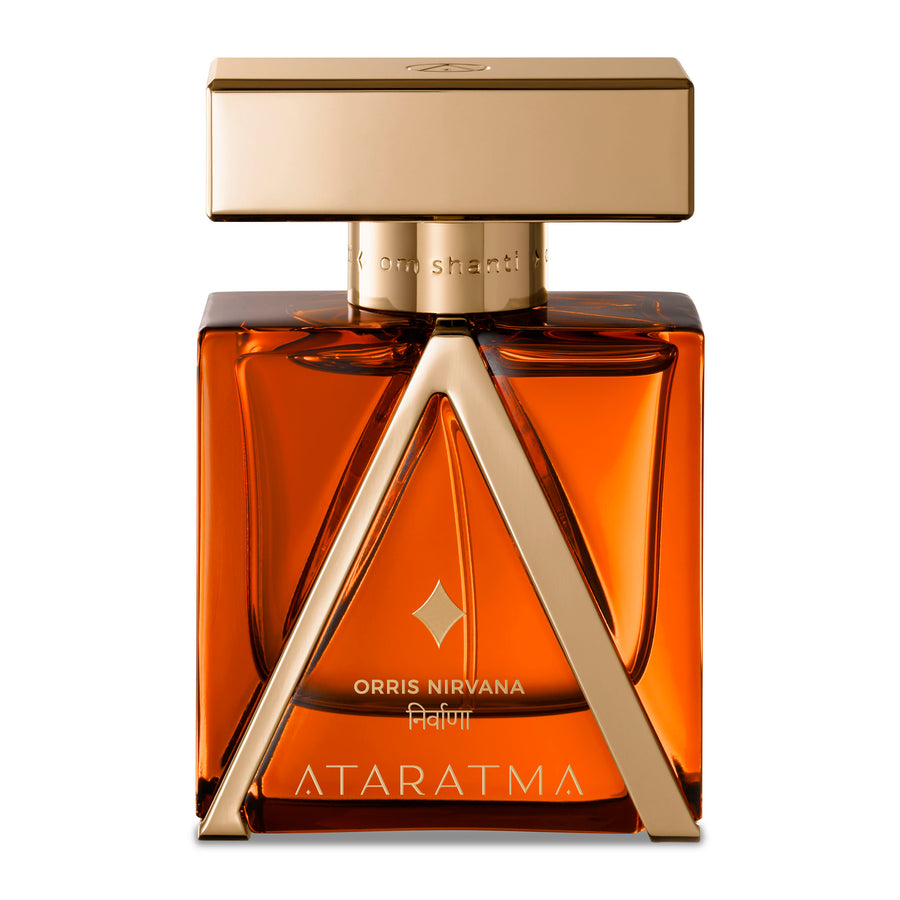Many people now build a collection of scents (or scent wardrobe) to suit mood, season, time of day, and environments. Consider what you are looking for:
- Do you want a scent for special occasions and parties?
- Are you looking for a versatile scent to take you from dawn to dusk?
- What mood are you in? Are you looking to feel sexy, be comforted, uplifted?
- Are you buying it for you to enjoy on your own skin or are you looking to project a message?
Like fashion, a scent wardrobe has room for all different types of scents to suit the different facets of your individuality. Perfume is self-expression. The important thing is to express yourself and indulge in the delight that perfume can bring.
HOW TO ASSESS SCENT
TAKE YOUR TIME
Spray a new scent on a blotter first. Wait a few moments before closing your eyes, gently inhaling and allowing the scent to transport you.
Once you find the fragrances you like, try them on your skin. One at a time works best, and will allow you to fully experience the beauty of each creation. Take your time with each fragrance. Allow each one to fully progress from top to heart to base notes. Live with one you like for a while, wear it during the day, in the evening, for dates or cosy nights at home. See how each scent makes you feel and which occasions it suits best.
Different skin tones, acidity levels, hormones, temperatures, humidity, skin oils / condition and natural odours, all affect the way a scent evolves, making each scent unique to you.
We recommend you start with the inside of your arm slightly above your wrist. Our scents are very high in concentration and quality with excellent projection and longevity, so we advise you to start with 1 spray. Hold the spray about 15-20 cm away and spray once or twice.
TUNE IN
Exploring fragrances in an almost ritualistic manner will turn the activity into a sensual experience, rather than a means to an end. Most people are visually dominant, so tune into your olfactory senses: turn down the lights, close your eyes and find a quiet space and time to spritz and enjoy.
PRACTICAL TIPS
1 Ensure you aren’t wearing any other perfumes or strongly scented body products, and move any candles or reed diffusers away before you begin.
2 Use a different blotter for each scent and write the name of the scent on the blotter before you spray it, so you remember what you are smelling.
3 It’s also a good idea to lay a piece of paper on the table or surface for the blotters to sit on between smelling them, so the scent doesn’t stay on your furniture.
4 Have a notebook to hand to write down your responses such as feelings, colours, ingredients, memories, impressions, smells like…
5 How to Spray: Hold the blotter with the wide round end and spray the narrow end with the perfume bottle 5-15 cm away from the blotter.
Leave the blotter for 20 seconds before smelling to avoid the initial rush of alcohol. Perfume ingredients are suspended in a formula including alcohol for dilution and stability. Let this pass.
Now it’s time to smell, but don’t be tempted to put the blotter right up to your nose. If you inhale too strongly you risk desensitising your nose and if it touches your nose you won’t be able to smell anything else. Hold the blotter about 20cm from your face and waft the stick towards your nose.
6 If you are smelling several scents you will become ‘smell blind’. Some people recommend smelling coffee beans in between to refresh your nose, but we recommend smelling the nook of your elbow or your sleeve, or taking a break and getting some fresh air. Your own scent is neutral to you, so it’s like returning to home base. If you are testing several perfumes, walk away from the other blotters so you don’t end up contaminating / combining the scents.
ALL IN GOOD TIME
1-15 minutes
What you will smell first at this stage are the top notes. Their main purpose is to give a perfume an initial appeal and then transition smoothly into the next part of the fragrance. These are generally lighter and smaller molecules. Some common top notes are citrus scents like bergamot, lemon, orange, lime, as well as some herbs and spices like basil and star anise. Bear in mind that this is only the first impression and mostly you will be the only one to smell the top notes as they will be gone as you leave the front door.
15 – 60 minutes
Mid or heart notes as the name suggests make up the heart of the fragrance. Their function is to retain some of the top notes while introducing new scents to add depth to the perfume. They tend to remain for the duration of the scent, providing some balance and harmony to base notes which can often be more robust. Typical heart notes are florals like rose, geranium, jasmine and neroli as well as some light woods like pine, sandalwood, cedar and spices like pink pepper or cardamom.
They typically make up around 70% of the fragrance so take your time to judge the heart notes. Try to pick up individual ingredients. Think about how it makes you feel. Does it remind you of something or someone? Put it down and come back to it several times so that you don’t ‘over smell’ it.
1-12 hours
Base notes are the foundation of a perfume, they are rich, heavy, and long lasting. They begin to emerge towards the end of the first hour working with the heart notes to create the main feel of a perfume. They generally add depth, complexity, and resonance to a fragrance with typical base notes including darker and sweeter ingredients like amber, vanilla, ambergris, oud, musk, and patchouli.
HIDDEN IN SCENT: A TREASURE CHEST OF CONNECTIONS, MEMORIES, COLOURS, TEXTURES
Scent is alchemy beyond ingredients. The way to find a scent you will love to wear and to improve your descriptive language when talking about perfume is to tap into all your senses:
EMOTION How does the perfume make you feel? Does it change you, the way you carry yourself? How do people around you react to it? Does it feel formal or relaxed? Statement or low key? Does it seem expensive, sophisticated, younger, older, does it make you feel sexier, stronger, happier, cosy, comforted, uplifted or refreshed? Does it transport you to somewhere or back in time, remind you of a person, place or a memory?
SIGHT Does the scent have colours? Is it bright, or dark? Is it pastel, or neon? Does it feel like lights or shadows? Does it have a shape - is it sharp, round, heavy, amorphous?
SOUND What kind of sound would this fragrance make? Does it sound like an instrument, or a vocal? Is it loud or quiet? Is it high or low pitched? Is it harmonious or discordant? It is like a single voice, an ensemble or full orchestra? Does it have a beat, is it sharp or flat, high notes or low notes. Ascending or descending?
TOUCH What about texture and touch – does this fragrance feel like a fabric? What kind of fabric? Silk, cotton, denim, velvet, fur? Is it smooth, or rough? Does it have a shape or form? Is it warm or cool in temperature?
TASTE How would it taste? Is it sweet, or more savoury and saltier? Is it sour and sharp, or bitter and green? Is it spicy, vibrant, pungent?
Do any of these properties change over time?
At first it can be difficult to try to match your other senses to a scent but practicing and repeating the process helps you become more confident in describing scents – especially if you aren’t familiar with individual notes. And remember, there is no wrong answer!
TRUST YOURSELF
Scent is intimate, it exists in your personal space, on your skin, your clothes and your aura and it is an invisible connection between you and your universe so it must express your individuality and bring you pleasure. And, like choosing different outfits for season, occasion and mood, the same applies to perfume.
One day you will need something soft and intimate others you will seek comfort, playfulness, sexy or empowering. Perfume is one of the most powerful forms of self-expression, so make sure you express yourself in the most authentic ways.








